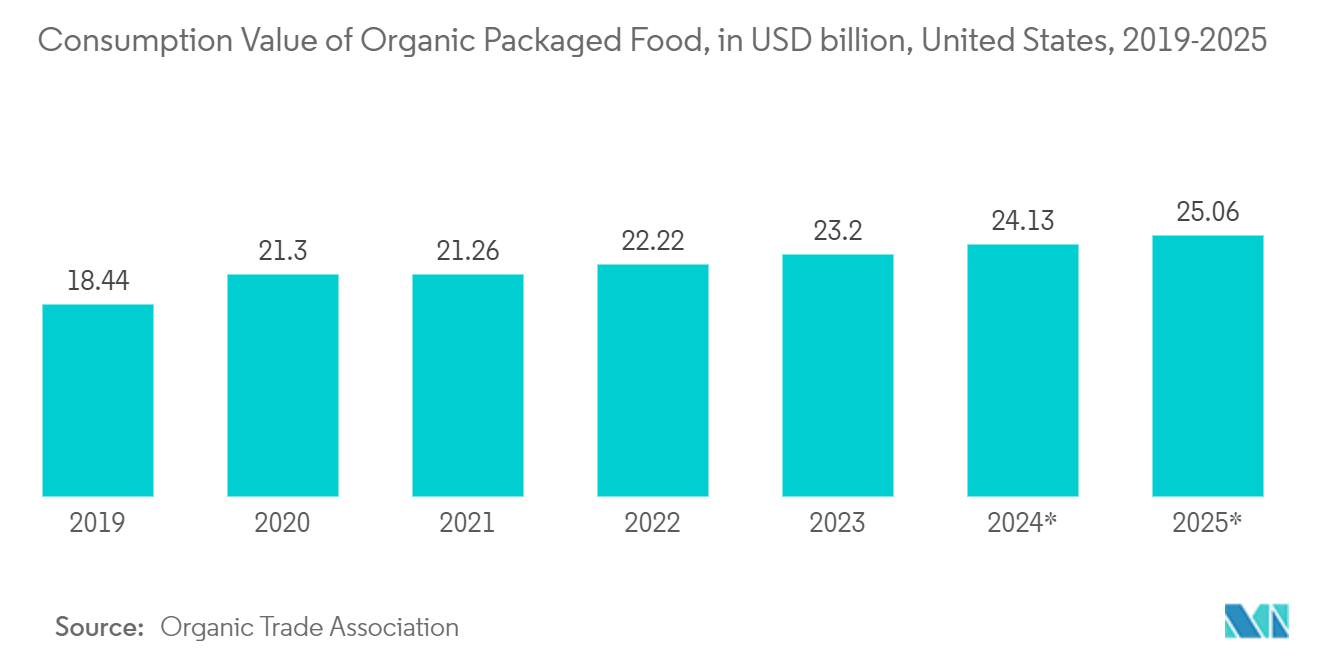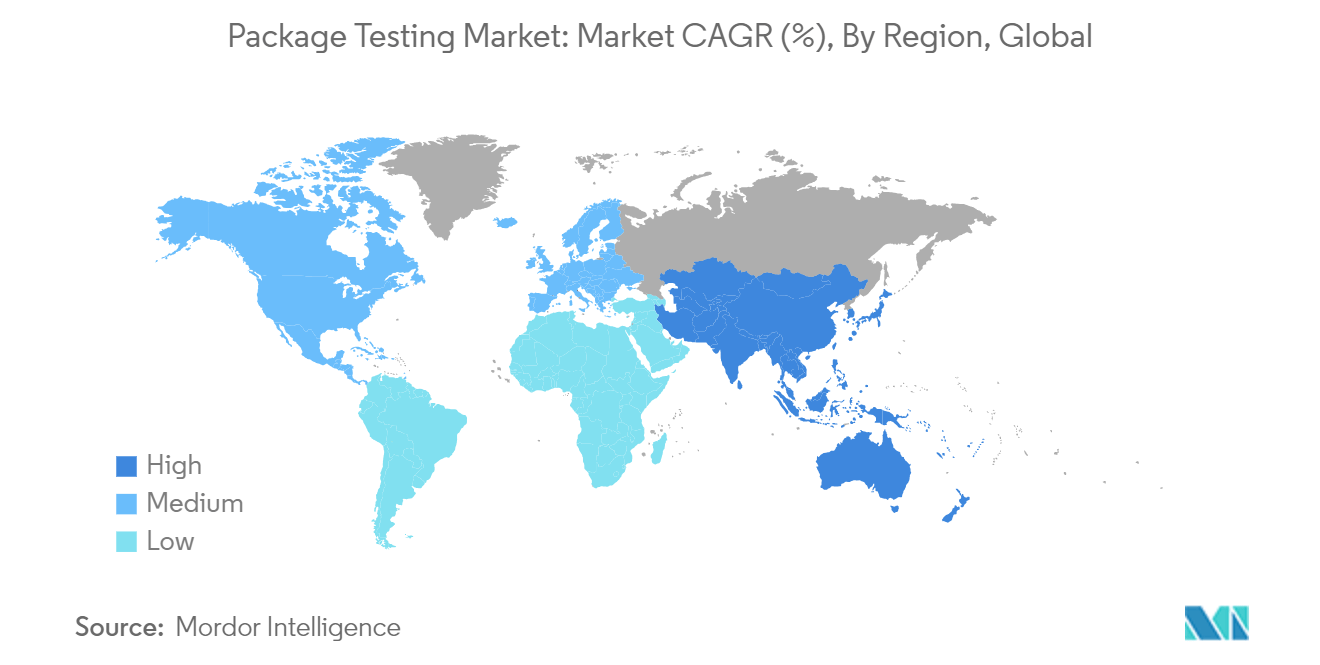Market Trends of Package Testing Industry
Food and Beverage Accounts for a Significant Share of the Market
- Advanced packaging methods, such as intelligent packaging, active, smart packaging, and modified atmosphere packaging, are replacing traditional methods, driving the need to test these packaged goods effectively.
- Products' safety is an important concern as they reach customers in the packaged form. Any toxic or damaging contaminant could affect the product itself, emphasizing the importance of package testing in the market.
- Packaged food's growth is more prominent in the developed economies of the United States and major European countries like Spain, France, and Russia. This emphasis created a robust demand for effective package testing in the market.
- Packaged food consumers in the United States increased their consumption due to convenience, saved time, and easy prep, with minimal wastage indicated as the primary reason. Nonstore retailers saw a 6.8% (±1.4%) increase from the previous year, as reported by Census.gov. In comparison, food services and drinking establishments experienced a 3.8% (±2.3%) uptick from May 2023.
- The need for package testing to ensure that the integrity of the package is not compromised increased in response to the growing awareness of environmentally friendly food packaging, such as paper-based packaging solutions. Foods and drinks that are packaged and processed are becoming increasingly popular. The sector is anticipated to grow as packaged food and consumer items are consumed more widely.
- According to the Organic Trade Association, the consumption of packaged organic food in the United States is anticipated to increase to over USD 25 billion by 2025 from USD 21.26 billion in 2021. The demand for package testing will expand in tandem with the growth in the consumption of packaged organic food. Organic food items frequently need to adhere to strict rules and regulations to retain their integrity and guarantee that they stay organic. Package testing ensures that the packaging's components and layout adhere to needs like avoiding contamination, preserving freshness, and prolonging shelf life. Strong package testing techniques will be required due to the rising demand for packaged organic foods.

Europe is Expected to Hold a Significant Market Share
- Europe is one of the key locations where the package testing sector has grown significantly over the previous few decades. The increased awareness among packaging firms, strict industry rules, and rising packaged product consumption are the main drivers of the package testing sector's growth.
- For instance, the EU Packaging and Packaging Waste Directive's main goals are to support the proper operation of the EU internal market and continuously enhance the environmental performance of packaging. Member states created national laws to execute the act, allowing businesses to certify, test, and certify the packaging materials and commodities.
- The packaging must be manufactured to allow recovery or reuse following specific requirements. The number of hazardous materials inside the packaging must be kept to a minimum in terms of emissions from incineration or landfills to maintain hygiene, safety, and acceptance for the packed product and the consumer. The requirement to follow several sector-specific packaging standards, such as those set out by the International Organisation for Standardisation (ISO) and the International Safe Transit Association (ISTA), further encourages the adoption of package testing across multiple business verticals.
- The need for packaging and related testing solutions is anticipated to increase further as vendors across various end-user sectors increase the frequency of new product releases. For instance, in March 2024, Nestlé International Travel Retail (NITR) is gearing up to introduce the Breaks for Good KitKat. This innovative offering not only links travelers with farmers in Nestlé's new Income Accelerator Program but also highlights the sustainability of the cocoa utilized in these bars. Notably, this will mark the debut of a KitKat crafted from cocoa beans exclusively sourced from farmers participating in the program.


